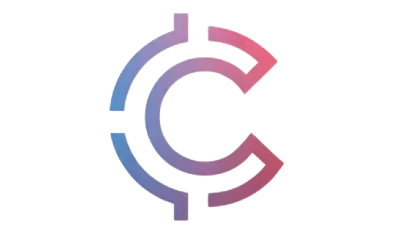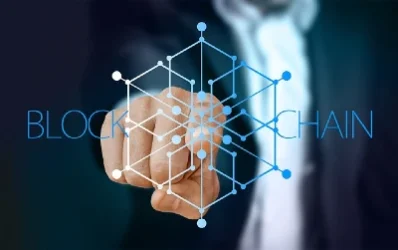Ethereum Upgrade 2025
Ethereum Upgrade 2025, has achieved a historic technical milestone in 2025 called the “Ethereum Nova Upgrade.” This is not a software update, but a sign that the whole Ethereum ecosystem is entering a new era. Its aim is not just to accelerate the network, but to balance decentralization, security, and affordability. The Ethereum Foundation kept the initial dream of Web3 in their minds while creating this upgrade – an internet with power in the hands of users and middlemen erased.
zkEVM Integration A New Era of Performance
The most important part of the Nova upgrade is the full mainnet integration of zkEVM (Zero Knowledge Ethereum Virtual Machine). This enables it to run smart contracts on rollup chains without triggering any compatibility issues. That implies decentralized applications (dApps) can scale now with full security of Ethereum. Previously, Ethereum used to handle ~30 TPS, but the zkEVM-enabled Layer 2 chains are now scaling at 100,000 TPS+. This scalability trend brings Ethereum on par with, or higher than, fast-speed competitors such as Solana, Polygon, and Aptos
EIP-5600 Intelligent Gas System of Fees
Ethereum 2025 also includes EIP-5600, adding an additional fee adaptation model titled “Dynamic Layered Fee Adjustment”. Within this protocol, fees of transactions within Layers 2 automatically adjust based on real-time traffic. Fees per average transaction have been reduced by 90%. While previously exchanging would incur the cost of $5, nowadays the same initiative is being conducted in $0.25-$0.40 lag-free. This update is specifically important to readers who live in developing countries or use micro-payments.
Privacy Meets Compliance ZK Technology
The Nova upgrade positions Ethereum well on both compliance and privacy sides. Due to zero knowledge proofs, they can become compliant with KYC/AML regulations while keeping their identity hidden. This means regulators are happy and users are secure. Now DeFi applications are getting compliant even while remaining anonymous, which was not possible for the past couple of years. This Ethereum move is another step toward widespread Web3 adoption – especially where banks want to implement blockchain.
State Channels 2.0 Off-chain Instant Transactions
Ethereum Nova introduced us to another amazing feature called State Channels 2.0. It allows real-time transactions to be performed off-chain, and only the end state is committed on the blockchain. This makes transactions extremely fast and low-cost. This technology is revolutionary for gaming, payments, and on-chain social networks. For example, blockchain games no longer require each micro-move to be written on-chain, which enhances speed and cost.
Green Ethereum Energy Efficiency Factored In
In 2022, Ethereum significantly lowered energy usage by transitioning to Proof of Stake, but the 2025 upgrade has further improved it. The Nova upgrade brings in “Adaptive Validator Sharding” feature that temporarily freezes idle validators on the network, thus eradicating unnecessary energy consumption. This action is highly appealing to climate-conscious investors and ESG-oriented institutions. Today, Ethereum’s energy footprint is 99.9% lower than Bitcoin.
Developer Experience DApps are simpler to build
Developers’ tasks have also been easier after the Ethereum Nova upgrade. There are new SDKs, documentation, and toolkits which have made things easier and streamlined. With the assistance of zkEVM, developers can now deploy dApps on Layer 1 and Layer 2 from one codebase. This improves speed, efficiency, and consistency. After Nova, new project adoption on Ethereum has increased by 35% which shows how much the community is loving this upgrade.
Institutional Interest The era of Wall Street has arrived
Immediately after the Ethereum upgrade, institutional investors started to aggressively enter the space as well. Blue-chip players like BlackRock, Fidelity, and Deutsche Bank have come out with Ethereum-based ETFs and DeFi funds. After the Nova upgrade, the stability and regulatory compliance of the network gave institutions a sense of confidence that nowadays Ethereum is not a tech project anymore, but has turned into a “digital economic infrastructure”. Currently, the Total Value Locked (TVL) of the Ethereum ecosystem has crossed $200B+.
Impact on Layer 2 Ecosystem Rollup Explosion
The Nova upgrade has significantly increased the adoption of Layer 2 tools such as Optimism, Arbitrum, zkSync, StarkNet. All such protocols are now completely compatible with zkEVM because the Ethereum Layer 2 ecosystem is diversified and mature now. It has also been observed that as high as 60% of the usage on dApps has now transitioned over to the L2s – because they are cheaper, faster, and equally as secure. The Layer 2 adoption has been pushed to mass level by the Nova upgrade. Challenges and Next Steps – What’s next?
Despite the Ethereum Upgrade 2025 being a gigantic success, there are certain aspects to improve on.
Cross-chain interoperability, wallet UX (user experience), and transaction finality time are still areas to be improved. The Ethereum Foundation has already announced “Nova Phase 2” that will include AI-powered smart contracts, modular state storage, and on-chain identity utilities. This roadmap shows Ethereum is still on the rise — and becoming the hub of not just blockchain, but the future of the internet. Conclusion – Bright Future of Ethereum
The Ethereum Upgrade 2025, or Nova, has not only made the network scalable and affordable it has given practical shape to the vision of Web3.
From zkEVM integration to off-chain state channels, from dynamic fees to green tech — at every level, Ethereum has proved it is still a pace-setter in innovation. Ethereum is no longer just a coin, but rather a decentralized digital nation where developers, users, institutions, and even regulators are all involved. And it’s only just beginning.

